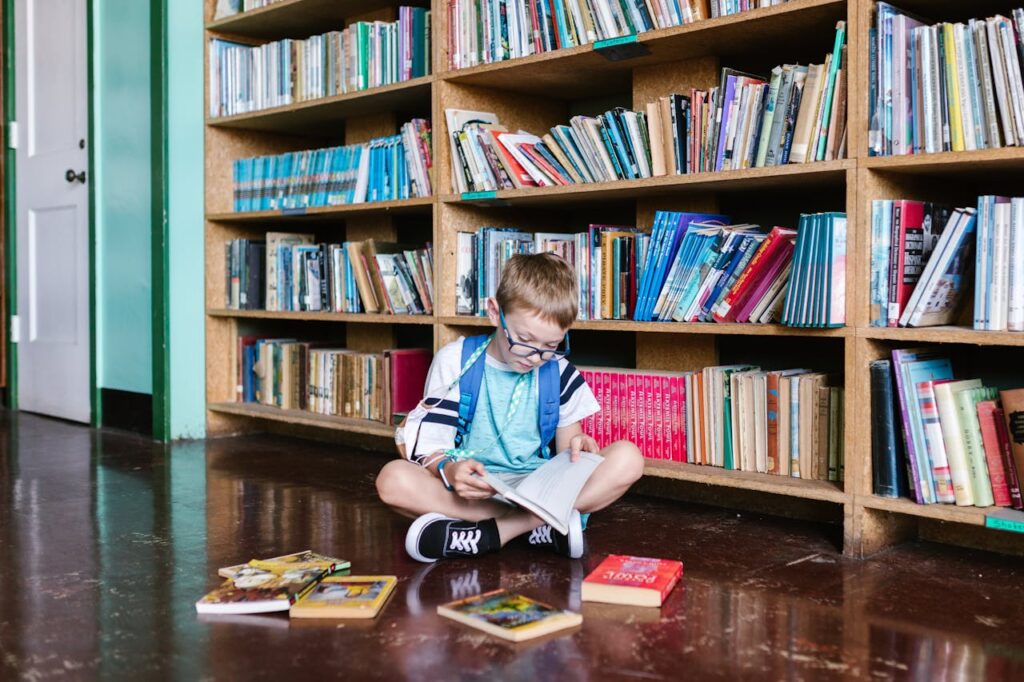
Children’s books are more than just stories—they are gateways to new experiences, cultures, and ideas. While picture books and chapter books are often staples in children’s lives, these books offer much more than entertainment. They foster curiosity, build essential skills, and create lifelong learning habits. In this article, we’ll explore different aspects of children’s books that you may not have thought about before.
The Role of Illustrations in Children’s Books
While the narrative is often the focus of children’s books, the illustrations play an equally important role. In fact, for younger children, illustrations are the primary method of storytelling. They help children process information, understand emotions, and connect with characters.
Here’s how illustrations can help in children’s books:
- Visual storytelling: This is used to make children comprehend the plot, prior to reading the text through images.
- Emotional connection: Emotion can be better evoked through expressions and body language of characters in illustrations than through words.
- Development of creativity: Bright, colorful pictures provoke imagination in children, and they can invent their own stories to fill in the blanks.
- Learning devices: In the case of educational books, illustrations can be applied to give children an understanding of something like shapes, colors, animals, etc.
The text along with images enables children to comprehend the story at various levels and thus they like to read and gain experience even before they learn to read.
The Power of Diverse Characters in Children’s Books
Representation in children’s books is vital. Diverse characters help children from different backgrounds see themselves in the stories they read, fostering a sense of belonging and pride in their identity.
Diversity in children’s books can include:
- Different cultural backgrounds of all characters: The world is a diverse place that is taught to the kids by characters with different cultures.
- Ethnic diversity: Books about characters of other ethnicity will be able to eliminate stereotypes and focus on inclusivity.
- Inabilities and abilities: The characters in books that portray cases of disabilities foster empathy and comprehension.
- Family structures: Books on various types of families, such as single-parent families, multi-generational, adoptive, etc., make children learn and feel about different family structures.
Representing various people in children’s books not only corresponds with children’s reality but also helps children learn the good lessons of accepting people, respecting people, and being empathetic towards them.
Using Children’s Books to Build Life Skills
Children’s books are not just about learning to read—they also teach important life skills that children can carry with them into adulthood. Many books cover topics like patience, perseverance, and kindness, preparing kids for the challenges and experiences they’ll face later in life.
Some life skills that children’s books help develop include:
- Problem-solving: Many stories revolve around characters who face challenges and find solutions, teaching kids how to approach problems.
- Emotional regulation: Books often help children navigate feelings like anger, fear, or frustration, teaching them how to manage their emotions.
- Conflict resolution: Stories that show characters resolving conflicts can teach kids how to approach disagreements in a calm, thoughtful way.
- Responsibility: Books with characters who take on responsibilities (like caring for a pet or completing a task) encourage kids to develop accountability and a sense of duty.
By reading these stories, children not only learn to understand their emotions but also pick up practical skills they will use in their everyday lives.
The Value of Nonfiction Children’s Books
Nonfiction children’s books are as crucial as fiction, even though the former are usually ignored. These are the stories that help children discover the magnificence of the world and develop curiosity and a desire to discover new things. Here are some categories of nonfiction books that can be useful to children:
- Biographies: Tales that pertain to real individuals can motivate kids and enable them to know about historical characters, role models, and leaders.
- Books about nature and science: These books help children get acquainted with the animal world, plants, planets, and ecosystems, in which they develop a love of science.
- How-to books: A how-to book can be a craft project or a cooking book, but they all teach children new skills and promote hands-on learning.
- Reference books: Dictionaries, encyclopedias, and atlases are books that will enable a child to get answers to his/her questions and learn to investigate.
Nonfiction books enable children to pursue their interests in a relevant process as well as stimulate the ability and compulsion of children to ask questions and learn something new.
The Benefits of Digital Children’s Books
In today’s digital age, children’s books are available not only in print but also in digital formats, such as eBooks and interactive apps. While traditional paper books are still valuable, digital books offer unique benefits for young readers:
- Interactive elements: Many digital books come with interactive features like sound effects, animations, and clickable pictures, making reading more engaging.
- Portability: eBooks allow children to take their favorite stories with them wherever they go, making reading convenient even during travel.
- Enhanced learning: Some digital books offer quizzes, puzzles, and games that complement the story, helping kids reinforce what they’ve learned.
- Customization: Many digital books allow for text-to-speech options or the ability to change the text size, which can be beneficial for children with reading difficulties.
Digital books offer a modern twist on reading and can complement traditional reading methods, making books more accessible to today’s tech-savvy children.
Final Thoughts
Children’s books play a vital role in shaping the future of young readers. They provide the foundation for learning, creativity, and emotional growth. Whether it’s a picture book about animals, a nonfiction story about space, or a chapter book about friendship, each book offers something new and valuable to children.
By carefully choosing books that match your child’s interests, age, and needs, you can help nurture their love for reading and set them on the path to becoming lifelong learners.
Frequently Asked Questions
1. What factors should I consider to get my child the right children’s book?
Think about the interests of your child, as well as their level of reading and age. Books that suit their level of curiosity and growth will interest them.
2. Are electronic books as useful as normal books?
Yes! Digital books are highly interactive and have the convenience, whereas books are significant as they provide tactile experiences and focus.
3. Do children’s books have the capability of giving my child life lessons?
Absolutely! Most children’s books have deep moral lessons of kindness, patience, problem-solving, and compassion.
4. What can I do to make my child read more?
Establish a regular reading habit, turn reading into a game, and bring them to libraries so they can experience new books and genres.
5. Should my child read nonfiction books?
Yes! Nonfiction books are capable of provoking interest and making kids more balanced in their knowledge of the world, including science, history, and many others.





